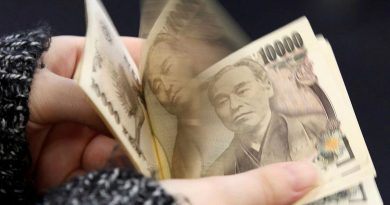Black Designers Navigate Steep Barriers to Financing
When Jamie Williams and Charles Royals embarked on a DIY-style casualwear project last March, it seemed to be an experiment to weather the COVID-19 lockdowns that were starting to go into place.
As they began to quarantine with Williams’ parents in Durham, N.C., the duo sprung $250 for samples, got to bleach processing sweatsuits at home and finessed a small Easter photoshoot with family members modeling the samples. And so, Naclo Apparel LLC came into being, orders initially flowing in through DMs on the brand’s then new Instagram page.
Now, Williams and Royals, who have since developed a company website, teamed with manufacturers in Los Angeles, processed more than 1,000 orders and shipped them through the U.S. Postal Service, are ready to take their start-up endeavor to the next level. In 2021, the company plans to grow and open a warehouse office in Los Angeles, and bring on marketing and social media managers.
Standing at this milestone, they face decisions about investment and financing options to grow their business that can be exceptionally challenging for Black founders and designers in fashion. So far, Williams and Royals have sought to bypass the financing rigamarole by adopting a lean make-to-order, direct-to-consumer model.
To get this far, Williams and Royals have relied on their expertise and experience in the industry — Williams majored in economics, has a degree in design at Parsons, as well as experience in retail marketing and buying, while Royals also has a background in luxury consignment and retail logistics — and, at times, their own physical stamina to process and pack orders through the night.

Related Gallery
A History of Fashion in the Black Civil Rights Movement
“On a macro scale, getting into a traditional business is very expensive,” said Williams. “We’ve managed to be able to grow our business by being very scrappy, keeping the cost as low as possible so that we could continue to reinvest in ourselves, and reinvest in our product offerings.”
Investors and founders in the fashion industry echoed the observation that sources of funding, often a function of social and professional connections and proximity to generational wealth, can be elusive for Black entrepreneurs in America.
For instance, venture capital funding, often seen as a channel for high-growth startups, is still an area of wide racial disparities — just about 1 percent of start-ups funded by venture capital have Black founders, according to the Transparent Collective, a nonprofit focused on entrepreneurs from underrepresented groups.
Exact figures of the number of Black-owned companies formed during the pandemic are hard to come by, but there are clear indications that the economic fallout has also affected Black-owned businesses at higher rates. An October report by the consulting firm McKinsey and Co. found that from February to April, roughly 41 percent of Black-owned businesses in the U.S. had closed due to the pandemic, a stunning loss that the report noted also demonstrates difficulties in accessing credit during the pandemic.
“Black Americans have never had an equal ability to reap the benefits of business ownership,” the report said. “While about 15 percent of white Americans hold some business equity, only 5 percent of Black Americans do. Among those with business equity, the average Black American’s business equity is worth about 50 percent of the average American’s and a third of the average white American’s.”
But access to capital is critical for fashion and beauty businesses, which experts in the field note often face significant initial overheads in the form of testing costs, product development and design, procuring materials and samples, managing inventory and spending on digital marketing as they launch the business.
“In particular, looking at the fashion and beauty space, a lot of the entrepreneurs, just in general, require significant upfront capital to get the product up and running,” said Brittany Davis, general partner at Backstage Capital, the venture capital fund founded by Arlan Hamilton.
“So with that kind of lead time, you just do need upfront capital, but we’ve seen it be a challenge,” Davis said. “Getting that capital is hard for most businesses, but then I think for Black-owned businesses, it’s even more challenging, just given the discrepancy of what we see in the lack of capital going to Black businesses,” she said.
Backstage’s investments reflect the fund’s stated focus on companies led by women, people of color and LGBTQ founders — some 80 percent of its investment portfolio is made up of companies with a Black founder, or a Black member of the founding team. Roughly 15 percent of all the companies that Backstage has invested in are in the fashion and beauty sectors.
Backstage tends to invest during the seed rounds and early stages of start-ups, writing investment checks that range between $25,000 and $100,000, Davis said. Over the past five years, Backstage has invested in about 160 companies at a rate of roughly 30 or so companies a year, a pace which Davis said has held steady even during the pandemic.
But in addition to initial funding, companies also need ongoing working capital to sustain their operations, presenting another front of funding challenges as the business grows. Start-ups looking to maintain healthy levels of working capital will need banking relationships in order to support themselves with lines of credit as orders come in.
This, too, presents similar challenges of networks and connections that can be out of reach for Black entrepreneurs, Davis said. Here, Backstage also helps the companies it invests in to build those network connections, she said.
“What we’re also seeing is, ongoing working capital is challenging for Black founders as well,” she said. “Sometimes you need to be even building relationships for those sources of capital as well, even after you’ve received a certain amount of venture capital to get started.”
During the pandemic so far, Backstage has invested in at least two Black-owned businesses in the beauty sector — Pressed Roots, a blow dry bar specializing in textured hair care started by founder Piersten Gaines, which opened its flagship location in March, and AMP Beauty LA, a retailer focused on beauty and hair care products.
The fund’s decision-making on companies to invest in often comes down to a company’s founders or founding teams, their mission for the company and whether they’ve charted a clear course for growth, Davis said.
“We build in, from the investment team side, our own thesis of how big we think this market can get, and where we see the returns coming from,” Davis said. “But again it really does start from connecting with a founder, and really seeing, do they have that vision and grit to get through tough times, and build a really strong business that can deliver venture returns?”
For brands starting off with Naclo Apparel’s small-scale, make-to-order path, novel forms of investment and infrastructure are starting to open up. The venture operating company Resonance, which invests in fashion brands oriented around sustainability, launched the beResonant marketplace during the pandemic to support designers traditionally marginalized in the field.
“We want to empower existing brands, to basically level the playing field for people of color and creators of color,” said Tony Shellman, who leads beResonant.
Resonance generally focuses on brands with a no-inventory model of made-to-order clothing, helping them take orders online, processing them in the U.S. and having ordered apparel manufactured in the Dominican Republic. Products are shipped to customers roughly two weeks after an order is placed, Shellman said.
The beResonant accelerator program, which launched in July, supports the brands of 10 Black fashion founders who were chosen from a pool of some 350 applicants, according to the company.
Having to meet minimum order requirements on fabrics, or to submit letters of credit up front in order to work with factories to hold and produce goods could be prohibitive for newcomers. The idea is to rethink and eliminate many of those traditional barriers to starting a fashion business, particularly for Black designers without access to resources, Shellman said.
“That becomes a heavy burden on these small brands that don’t have the financial capital,” he said.
The beResonant program helps small designers circumvent these barriers in part by helping designers manufacture their products, and to fulfill and ship orders, he said. The program is also supported by creatives on the Resonance team, including design director Nicole King and JCRT designers Jeffrey Costello and Robert Tagliapietra, who mentor newer designers on the beResonant platform. The newer brands are also supported by production, managed services and marketing staff on the Resonance team, Shellman said.
“Our goal at beResonant is, we allow these brands to come on, we provide the infrastructure. They drive the creative into our system, and it’s no heavy lifting for them,” Shellman said.
Underlying the funding inequalities in fashion is also the lack of resources to Black designers on the range of longer-term funding sources that are available, said Shawn Grain Carter, associate professor of fashion business management at the Fashion Institute of Technology, who also aids Black entrepreneurs in starting businesses in the industry.
Carter said she advises Black-owned brands on sources of funding and investment, and other financial services meant to support businesses in the industry, such as factoring, which serve as conduits between designers and retails.
“Having this kind of information is critical for Black fashion brands,” she said.
Naclo Apparel’s Williams and Royals said their plan had always factored in the difficulties for Black designers in seeking traditional financing options, and also prioritized their own autonomy to steer business decisions.
“For Black businesses, getting angel investors, investors in general, going down the seeding path etc., is extremely hard,” Williams said. “Even being able to talk to the right people, to get the ball rolling is hard, because we’re not necessarily in the rooms that those conversations are happening.”
As the company grows, Williams and Royals have been discussing the possibility of bringing in outside investors, but for the time being, they plan to reinvest their own earnings to support their growth.
“Our dream has been to continue to invest in ourselves,” Williams said.
Source: Read Full Article


